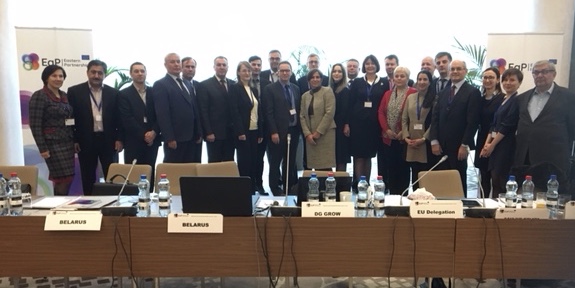The aim of the Eastern Partnership is to help the partner countries Armenia, Azerbaijan, Belarus, Georgia, Moldova and Ukraine to build up a functioning quality infrastructure. Part of the programme also includes deepening economic integration between the partner countries and the EU. This year’s conference took place in Minsk, Belarus. Amina Makboul represented Swedac and presented the Swedish market surveillance.
What aspects of market surveillance did you discuss during the conference?
We discussed the development of market surveillance within the EU and the reform work of the partner countries, which aims to build up well-functioning and effective market surveillance. We also touched on the Commission’s new e-commerce guidelines as well as the market surveillance of products with regard to electromagnetic compatibility and radio equipment.
How can knowledge about Swedish market surveillance help the partner countries implement changes in quality infrastructure?
Each partner country must start out from its own national prerequisites when it comes to strengthening market surveillance, which forms part of the quality infrastructure. On the other hand, the Swedish model, as well as the mechanisms we have for cooperation between market surveillance and the customs authorities, can serve as an example when it comes to coordination between the market surveillance authorities in the partner countries.
In Sweden, as well as in the rest of the EU, we have working institutions and regulations, which provide conditions favourable to effective market surveillance. However, some of the countries in the Eastern Partnership are struggling with political instability and ineffective institutions. After experiencing corruption, they need to build up confidence in market surveillance among the public and industry as part of their reform efforts. However, at the meeting it became clear that e-commerce is a common challenge for market surveillance authorities in both the EU and the partner countries.
How can improved quality infrastructure in the partner countries create conditions more favourable to trade with the EU?
Improved, strong and functioning quality infrastructure serves as an important component of trade, not least through alignment with the EU’s regulations and the use of European and international standards. Several of the partner countries are currently working with this. In practice, this allows products from domestic companies in the partner countries gain access to the EU market if they meet EU requirements.
Was it a successful conference, and will you participate next year?
Absolutely, Swedac has already announced its participation in the next panel, which will be in autumn 2018. It is important that we participate, not least in the context of our leading role within EA and ILAC, but perhaps primarily in view of our international development work where Swedac has long experience in assisting countries to build up and strengthen their quality infrastructure.

